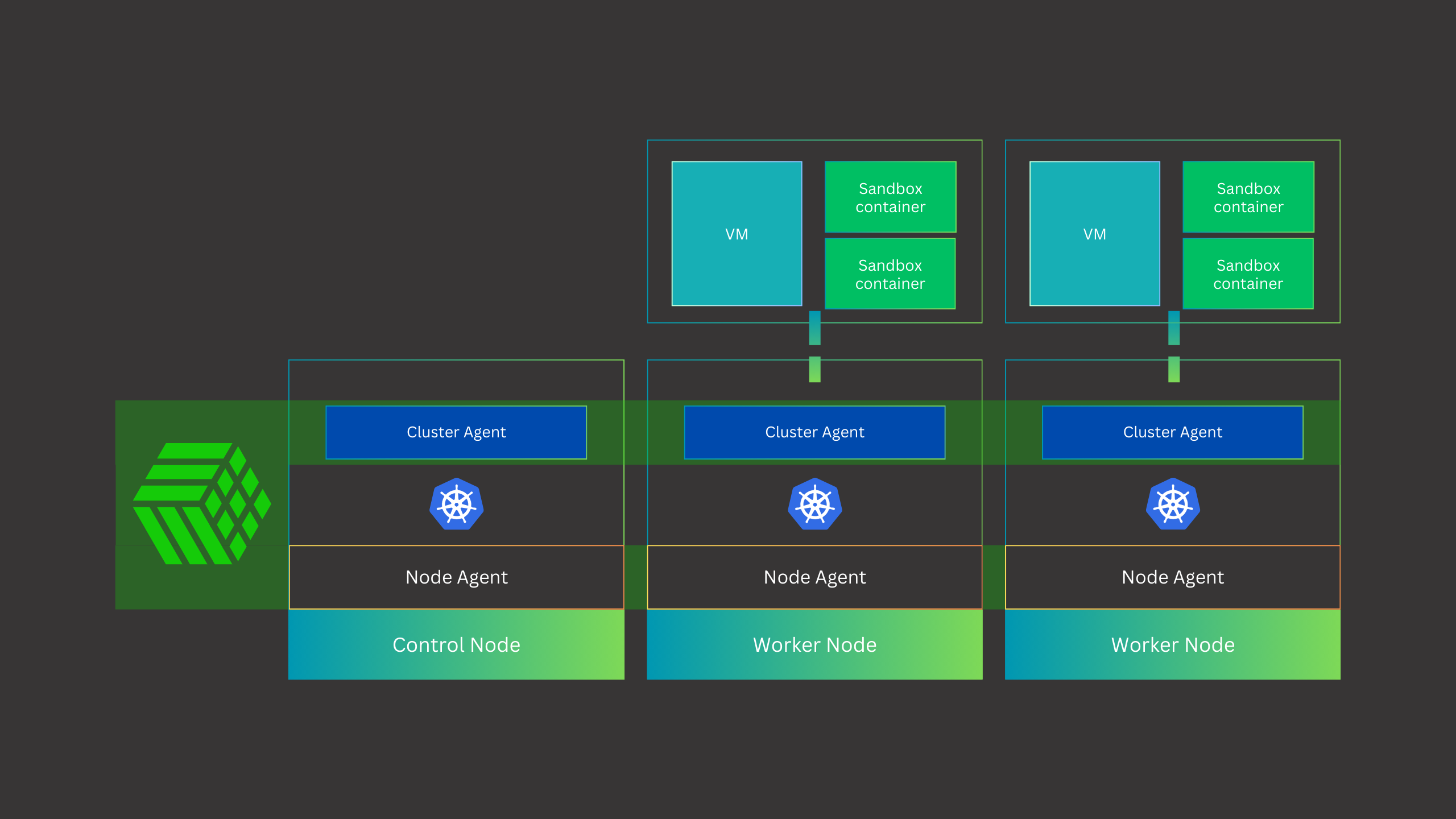Link Layer Architecture
The platform under the hood, and how cloud provisioning works

Link Layer is a modern infrastructure solution built on top of kubernetes using enterprise-class technologies including KubeVirt, Firecracker, and Rook. It is designed to be flexible and extensible which enables you to easily and securely run container apps and virtual machine workloads on the same cluster on-prem.
1. Node agent
Node agent is a daemon that runs on each node. It is responsible for managing the lifecycle of the cluster and networking. It interacts directly with the Operating System to manage nodes and Kubernetes.
2. Cluster Agent
The Cluster agent lives inside the Kubernetes cluster, and it interfaces with the control plane to manage containers and virtual machines. The agent also provides access to the Kubernetes API server and other cluster services from the outside node network.
3. Cloud Controller
This is the front facing component that users and admins interact with. It provides a web interface for provisioning and managing resources.
4. Link Layer DB
Link Layer uses a relational database (MariaDB) to store configuration data and cluster state information. This database is used by the cloud controller.
Link Layer uses a declarative model for cluster provisioning. Users define the desired state of the cluster using the web interface, and Link Layer takes care of the rest. It includes the following steps:
- Node agent provisions nodes, kubernetes cluster, and the cluster agent
- Cluster agent provisions containers and virtual machines
Link Layer combines the best of container and virtual machine technologies to provide a unified platform for running workloads on-prem. The security first design allows you to create secure and isolated environments for your deployments. Organizations can leverage Link Layer to build and deploy applications faster, with the confidence that their infrastructure is secure, scalable and reliable. Moreover, first party support for DevOps tools and CI/CD pipelines makes it easy to integrate Link Layer into your existing workflows.